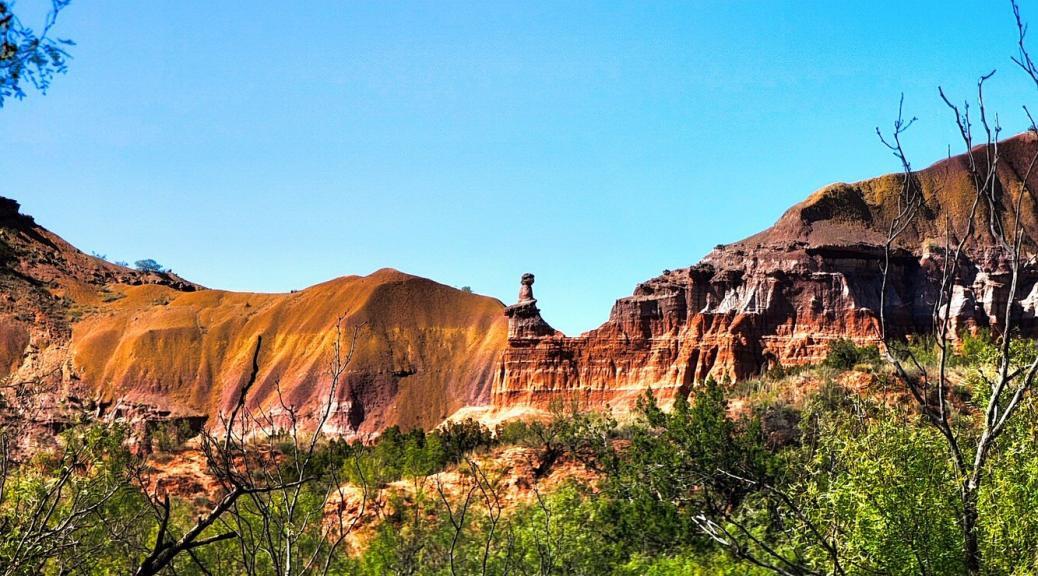
Palo Duro Canyon, TX
Palo Duro Canyon is about 14 miles east of the city of Canyon Texas. The Canyon is sometimes called the Grand Canyon of Texas and it is the second largest canyon in North America behind the Grand Canyon. The park itself consists of 27,173 acres originally deeded by private land owners in 1933 and built into a State Park by the Civilian Conservation Corps from 1933 to 1937. Although much work remained to be done, the park officially opened on July 4, 1934.
Palo Duro Canyon is a place where erosion shapes the land, four bioregions intersect, cultures have met and clashed and change is the only constant. The majestic beauty of the canyon takes time to appreciate. The sights and sounds here are lost in most urban settings. The canyon is one of the most beautiful and majestic areas within Texas. The canyon is approximately 120 miles long and 600 to 800 feet deep. The canyon was formed less than 1 million years ago when an ancient river first carved its way through the Southern High Plains. The rocks expose a geologic story that began approximately 250 million years ago, layer by layer revealing a panoramic view of magnificent color. People are believed to have lived in the area for about 12,000 years.
Palo Duro has a wide variety of wildlife including white tailed deer, mule deer, coyotes, roadrunners, wild turkey and cottontails along with a few others. We saw mule deer, a coyote, a cottontail, a couple of roadrunners and a group of wild turkeys as well as two snakes. “Palo Duro” is Spanish for “hard wood” in reference to the Rocky Mountain Juniper trees still seen all around the canyon.
The canyon was also the scene of the decisive battle of the Red River War (1874-1875) and was the final campaign against the Southern Plains Indians. Led by Colonel Ronald Mackenzie, the 4th U.S. Cavalry attacked the first of five encampments of Kiowa, Comanche and Cheyenne at dawn on September 24, 1874. As warriors attempted to set up a defense, the people fled up the canyon. The Cavalry burned their teepees and winter food stores then killed their horses. Facing the coming winter without food or horses meant starvation for the Indians and they were forced to return to the reservation in Fort Sill. Their traditional way of life was gone forever. In 1876 Charles Goodnight and John Adair established the JA Ranch in the canyon after it was opened to settlement.
This is a beautiful place to visit but be aware that it can get very hot in the summer and very cold in the winter. The best times to visit are in the early spring or fall. Also keep in mind that none of the sites have full hookups and only the Sagebrush campground is near one of the two dump stations. Although some people used tote tanks to go to the dump, in many cases the drive is three miles or more. Finally, the biting flies are horrible! Even while we were here in the fall with mild temperatures it was impossible to get away from them. For me, all this adds up to only staying in the canyon for 3 or 4 days. We enjoyed our stay here, hiking a few trails and marveling at the beautiful scenery. The best part of our stay was spending a few days with my sister, Jan and brother-in-law Chris and getting caught up!
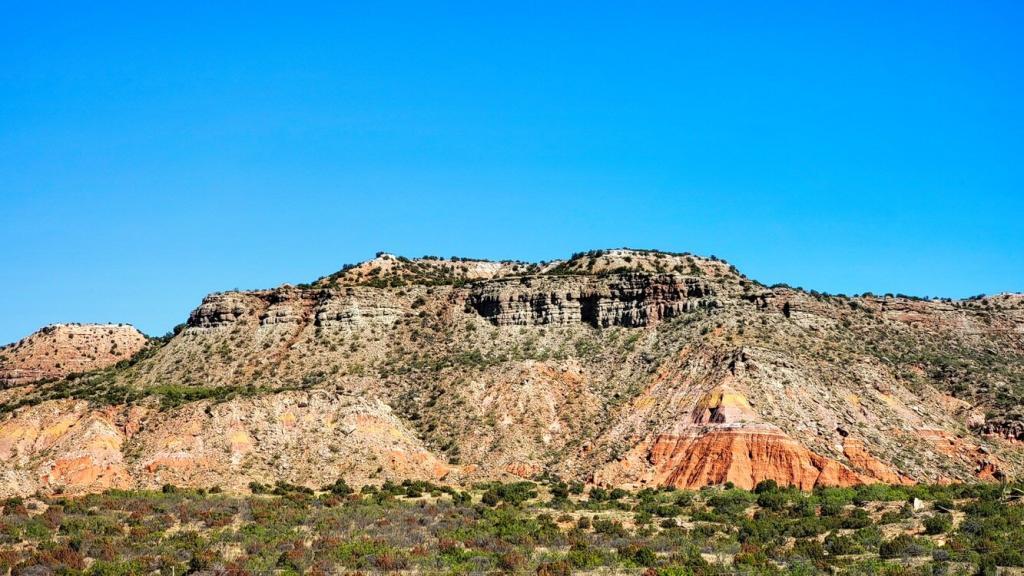
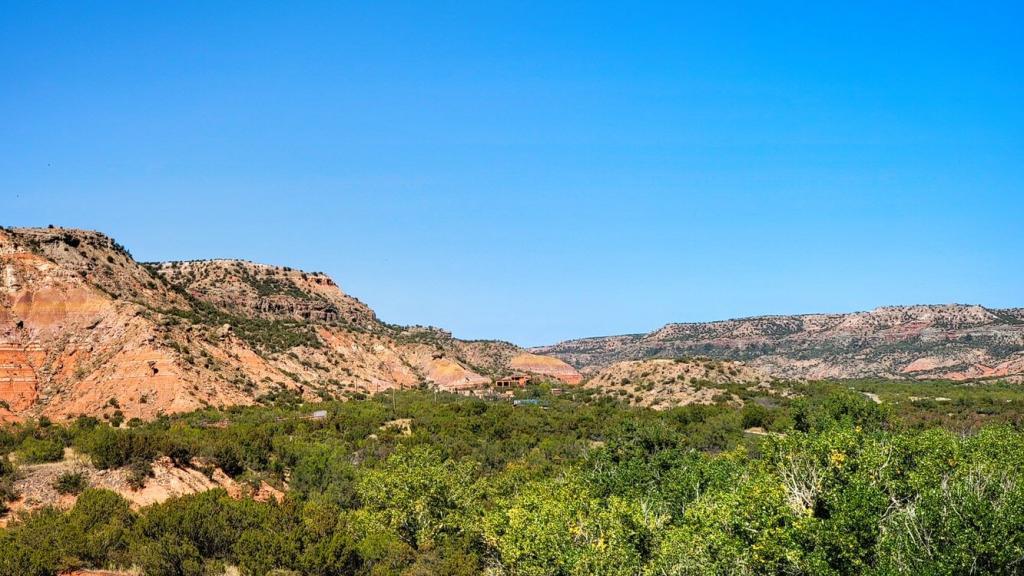
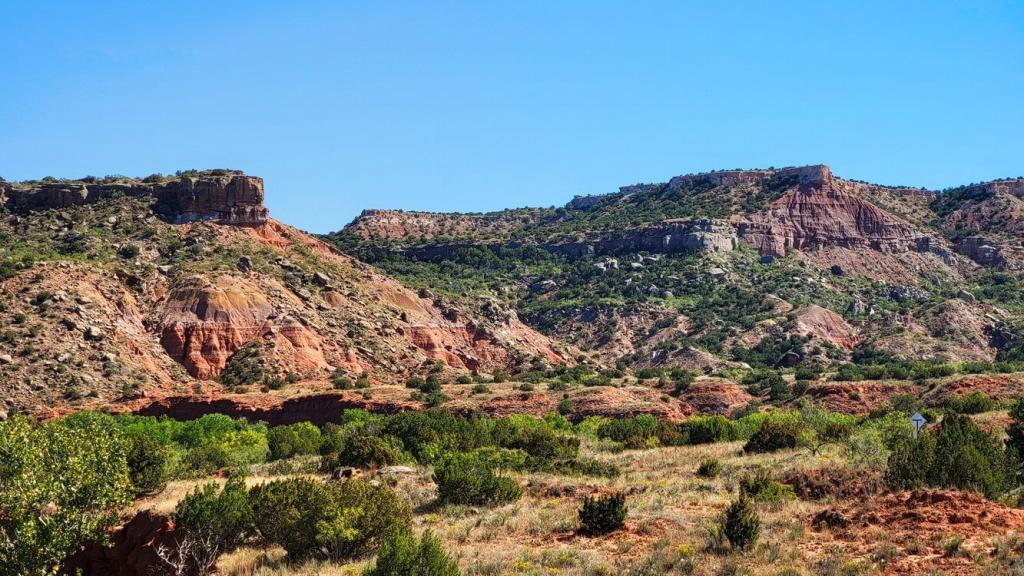
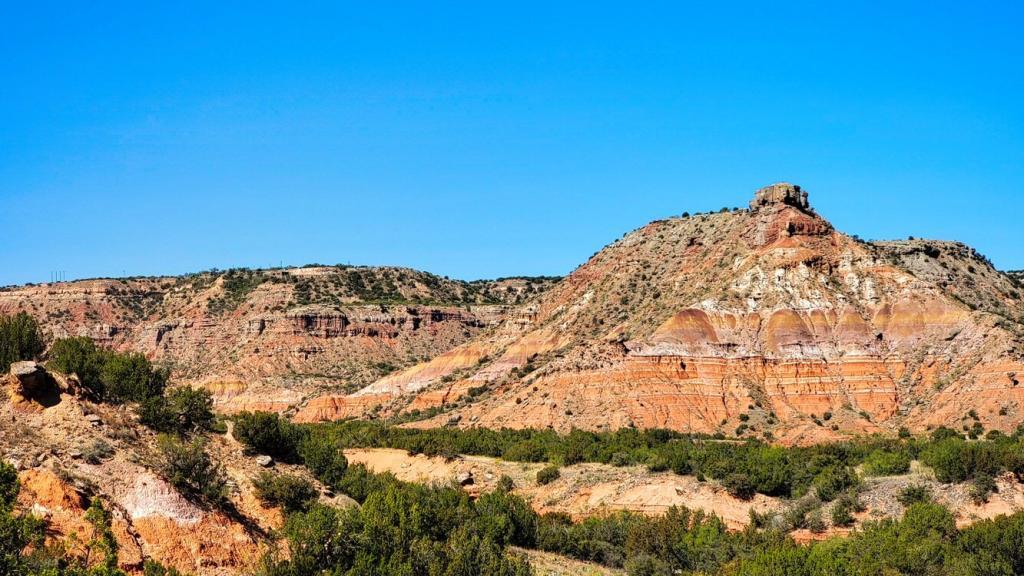
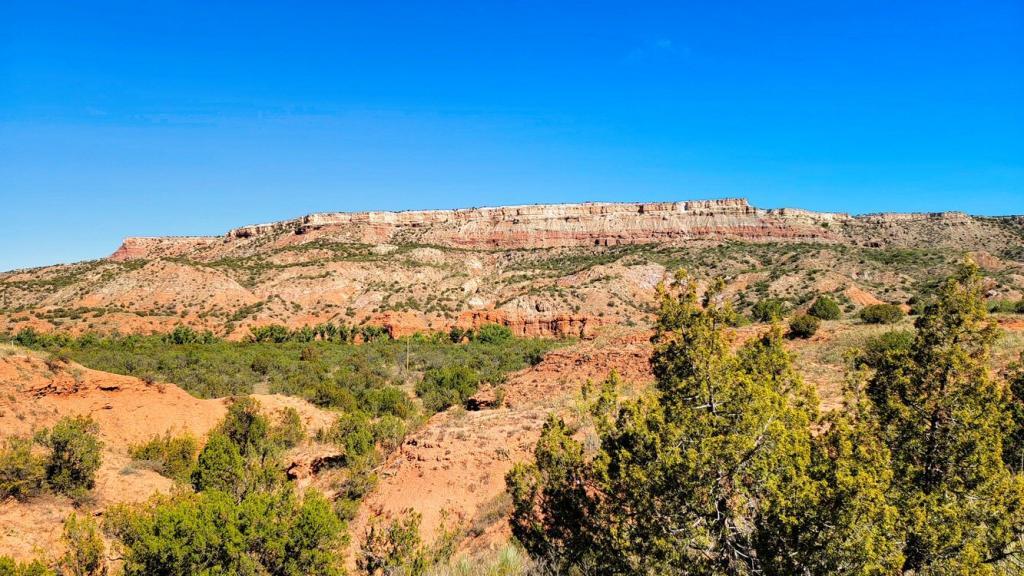
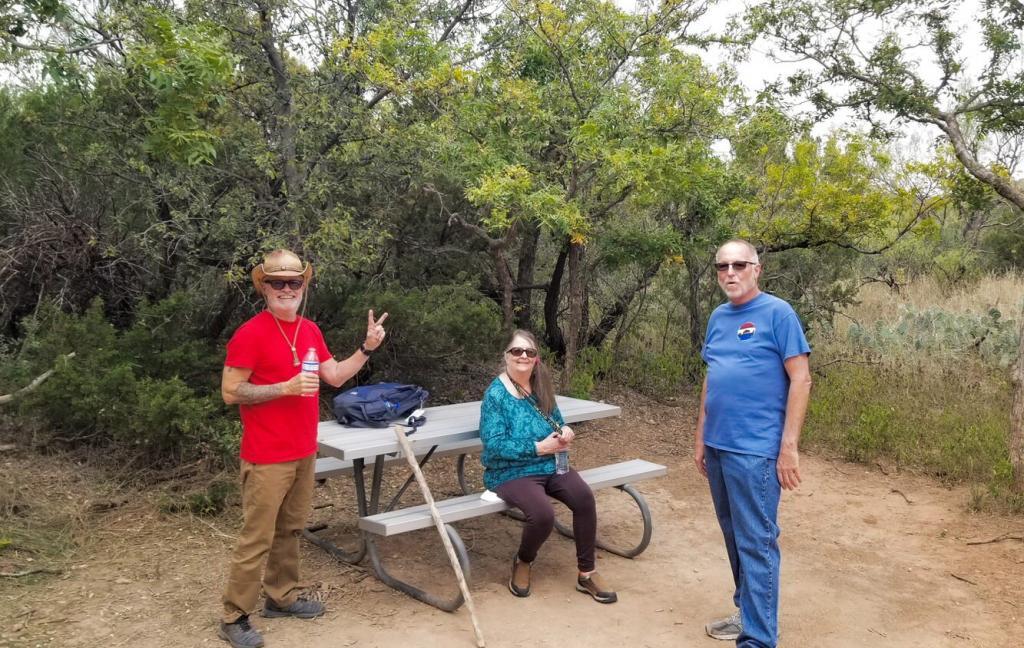
Park Review – Palo Duro Canyon State Park
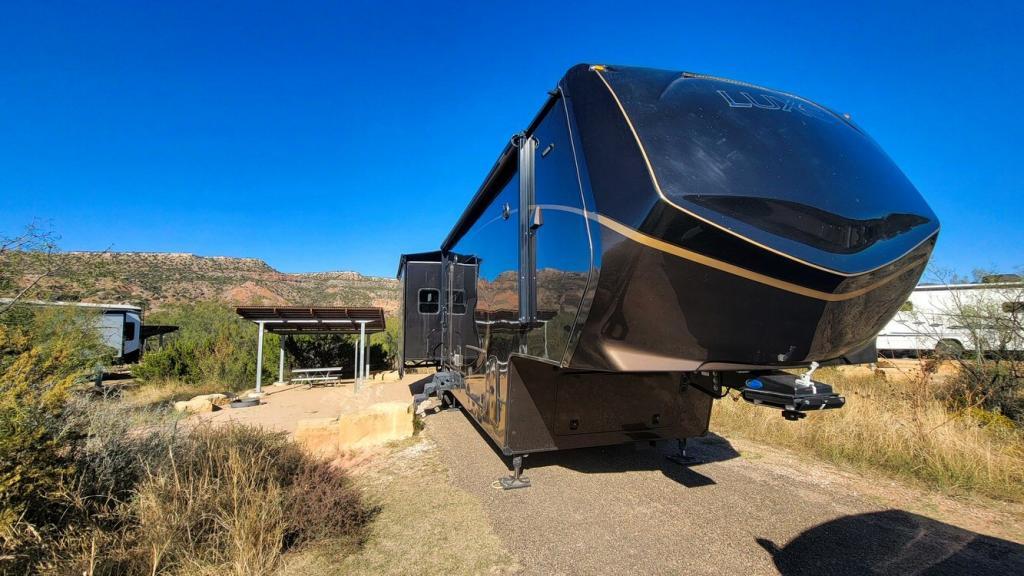
Rating: ⭐⭐⭐⭐
Site Quality / Amenities: Asphalt roads and pads. Large amount of space between each site. Some sites like ours have larger outdoor spaces.
Type: State Park
Access: From I-27 south of Amarillo, take exit 106 (4th Ave./217). Go east on Hwy 217 to the park. It will likely be several miles from the park entrance to your campsite and there is a 10% grade for about a mile going into he canyon and the road is narrow with switchbacks.
Staff: We didn’t have any interaction with staff at the park except for the gate attendant at the entrance. She was friendly and helpful with maps to the park.
Cellular/Wi-Fi: Verizon was non-existent but we did have AT&T although it was slow at 3.5 Mbps. At least we had AT&T as we didn’t expect any service at the bottom of the canyon.
Restaurants: None, the nearest city is Canyon with the nearest restaurant being about 15 miles away.
Nearby parks: We didn’t check out any other parks in the area.
What we liked: Unbelievably beautiful scenery in west Texas. Large sites and outdoor space (in some loops).
What we didn’t like: None of the sites have sewer connections. Dump stations were close to the start of the park with many campgrounds miles away. Both dump stations were tight for a big rig with the one between the Pioneer Amphitheater and the Sagebrush Campground being a bit better. For some reason there are tons of flies!
Verdict: Palo Duro Canyon is an unexpected gem in the middle of west Texas. The views inside the canyon are spectacular. This is a must see place to camp for a few nights. Unfortunately, there are no sites with sewer connections and it may be miles to get from many of the campgrounds to one of the two dump stations which in my opinion is a bit far to go even if you have a tote tank that’s limited to 5 mph maximum; although we did see people doing it. For that reason, we would not stay here for longer than 4 days unless possibly we could get a large enough site in the Sagebrush campground.
2 thoughts on “Palo Duro Canyon, TX”
The scenery sure looks spectacular there. Nice that you were able to spend time with Jan and Chris! Who would have thought that beautiful scenery was right the in Texas!
Yes, it was beautiful! The weather was great too with highs of 75-80°. We tent camped here with the boys about 30 years ago with Jan too. 😁